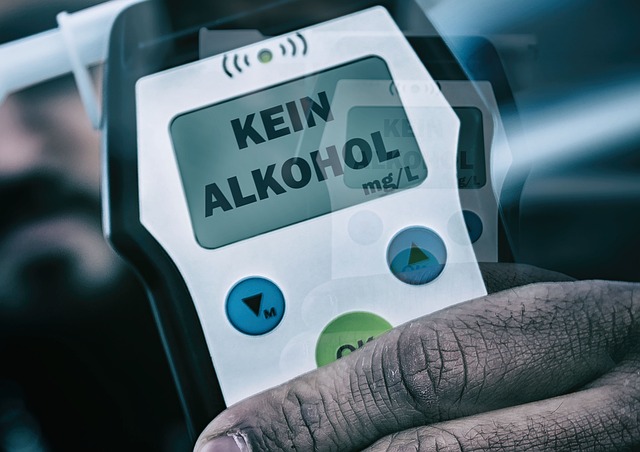DUI loopholes threaten road safety by enabling offenders to avoid harsh penalties. Alternative Sentencing for DUI Offenders offers meaningful solutions like community service, addiction treatment, and driver's education courses, promoting personal growth, reducing recidivism, and fostering safer communities. Balanced approaches that deter drunk driving while ensuring fairness can close legal gaps and contribute to a safer driving environment through consistent laws and effective alternative sentencing models proven successful worldwide. Regular evaluation ensures these practices remain effective and aligned with societal values.
In the ongoing battle against drunk driving, understanding and addressing legal loopholes has become a critical focus. This article explores the intricate world of DUI (Drunk Driving Under Influence) legislation and its gaps, with a specific emphasis on Alternative Sentencing for DUI offenders. We delve into the rising trend of innovative sentencing programs, effective strategies to close these legal loopholes, and inspiring case studies. By examining these aspects, we aim to shed light on future prospects and drive continuous improvement in combating this pervasive issue.
- Understanding DUI Loopholes and Their Impact
- The Rise of Alternative Sentencing Programs
- Effective Strategies for Closing Gaps in DUI Laws
- Case Studies: Successful Alternative Sentencing Implementations
- Future Prospects and Continuous Improvement
Understanding DUI Loopholes and Their Impact

DUI (Driving Under the Influence) loopholes have long presented significant challenges in maintaining road safety. These legal gray areas often arise from technicalities or ambiguities in existing laws, allowing offenders to evade substantial penalties. For instance, some individuals may exploit regulatory gaps by arguing for reduced charges or alternative sentences. This is particularly concerning given the potential risk to public safety when drunk drivers are on the roads.
Closing these loopholes is crucial in ensuring effective enforcement of DUI laws. Implementing Alternative Sentencing for DUI Offenders can serve as a powerful strategy. Options such as community service, participation in addiction treatment programs, or enhanced driver’s education courses offer meaningful alternatives to traditional punishment. Such approaches not only address the issue at hand but also foster personal growth and reduce reoffending rates, ultimately contributing to safer communities.
The Rise of Alternative Sentencing Programs

In recent years, there’s been a notable shift towards more innovative and restorative approaches to justice, particularly with the rise of alternative sentencing programs. One area where this is evident is in the treatment of DUI (Driving Under the Influence) offenders. Traditional penalties for DUI often include harsh fines, license suspensions, and even imprisonment, which can exacerbate existing social and economic disparities. However, alternative sentencing models offer a more nuanced path. These programs aim to balance punishment with rehabilitation, focusing on education, community service, and support services tailored to address the underlying causes of substance abuse.
By implementing Alternative Sentencing for DUI Offenders, the justice system can close gaps that often lead to recidivism. Instead of solely relying on punitive measures, these programs empower individuals to take responsibility for their actions while providing them with resources for long-term change. This not only benefits the offenders themselves but also contributes to safer communities by potentially reducing future incidents of impaired driving.
Effective Strategies for Closing Gaps in DUI Laws

Closing gaps in DUI laws is a multifaceted approach, requiring a balanced strategy that both deters drunk driving and offers fairness to offenders. One effective method is implementing alternative sentencing options for DUI offenders. This can include programs like community service, participation in addiction treatment centers, or educational workshops on responsible alcohol consumption. Such alternatives not only reduce recidivism rates but also hold offenders accountable without overly punishing them.
Additionally, enhancing the consistency and clarity of DUI laws across jurisdictions can help close loopholes. Standardized guidelines ensure that penalties are fairly applied, regardless of where an incident occurs. This includes updating laws to reflect modern understanding of alcohol impairment and its effects, as well as addressing any inconsistencies in blood alcohol level definitions or testing procedures. Such reforms contribute to a safer driving environment by minimizing opportunities for legal evasion.
Case Studies: Successful Alternative Sentencing Implementations

In the quest to reform the criminal justice system, alternative sentencing has emerged as a powerful tool, especially in addressing recurring issues like drunk driving. Case studies across various jurisdictions highlight successful implementations tailored for DUI offenders. For instance, some courts have adopted structured programs focusing on education, treatment, and community service for first-time offenders, significantly reducing recidivism rates. These programs not only provide an alternative to incarceration but also empower participants with the knowledge and support needed to make positive changes.
Another notable approach involves community-based sentencing models where DUI offenders are required to perform tasks like assisting at local driving schools or participating in public service projects. Such initiatives foster a sense of accountability while giving back to the community, which has shown promising results in promoting safer driving behaviors post-sentencing. These case studies underscore the potential of alternative sentencing for DUI offenses to effectively close gaps and create more just and rehabilitative outcomes.
Future Prospects and Continuous Improvement

As technology and societal norms evolve, there’s a growing emphasis on innovative approaches to criminal justice reform, such as implementing Alternative Sentencing for DUI offenders. This shift towards more diverse sentencing options offers promising prospects for the future. By exploring alternative methods, we can address the gaps in traditional systems, ensuring that rehabilitation and reintegration become central focus areas.
Continuous improvement is key to successfully closing loopholes and enhancing overall justice administration. Regular assessments of current programs and practices will enable stakeholders to adapt and refine these strategies over time. Embracing flexibility and staying abreast of emerging research ensures that Alternative Sentencing for DUI offenders remains effective, fair, and aligned with societal values.
Loopholes in DUI laws have long presented challenges in ensuring public safety. However, with a better understanding of these gaps and the implementation of effective strategies, such as alternative sentencing programs, significant progress can be made. These innovative approaches not only close loopholes but also offer positive outcomes for both offenders and communities. By learning from successful case studies and continuing to refine our methods, we can strive for a safer future, ensuring that those who violate DUI laws are held accountable while also receiving the support they need to reform. Alternative sentencing for DUI offenders is a promising path forward, one that empowers us to create a more just and secure society.






